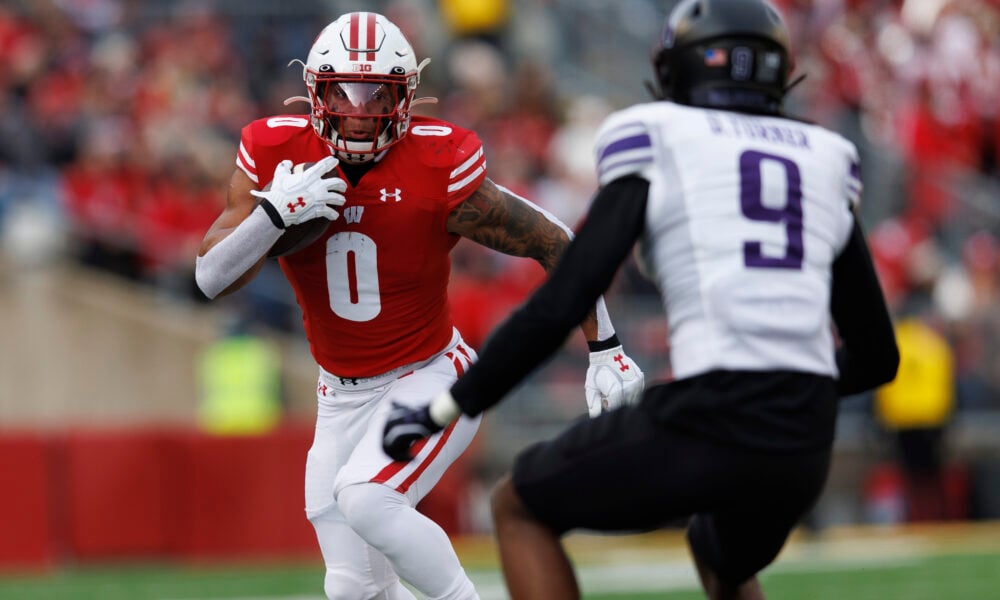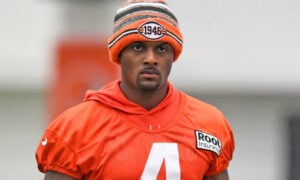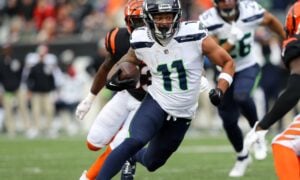2024 NFL Draft: Rookies Who Landed in the Worst Situations for Dynasty Leagues

The 2024 NFL Draft had everything fantasy football degenerates have grown to love and look forward to. A tidy pile of offensive players went early. Of the 32 picks in round one, 23 were offensive players, including 14 straight to open the draft.
In the world of dynasty fantasy football, statistically speaking, not all of those players will return the investment of their cost. Situation and landing spot are factors we need to take into consideration before investing our own draft picks on players simply based on how high they went in the draft. There are a lot more Jalen Reagors out there than there are Puka Nacuas.
Let’s examine a few rookies who landed in suboptimal situations for dynasty football purposes.
Michael Penix Jr, QB ATL
The first seven picks of the draft went more or less as expected. Then the Falcons sauntered in from stage left with the most bizarre pick of the draft by selecting Penix at eight overall. Drafting a 23-year-old quarterback to sit behind Kirk Cousins, whom they just signed to a four-year 180 million dollar deal, seems like a waste of a premium draft pick. Not to mention the almost certain discord it can create in the locker room for their new veteran signal-caller.
Outside of injury or Achilles set-backs, there is little hope of Penix seeing the field for at least the first three seasons of his NFL career. While it may bode well for his long-term development, it torches his immediate dynasty outlook.
The real-life pick is baffling, to say the least, and drops Penix’s dynasty value for at least a couple of years.
Brock Bowers, TE LV
The tight end position already requires patience for dynasty managers to get a true idea of how valuable their rookie pick may become. It is also a position that seems far more landing-spot-dependent than other skill positions. Bowers was the type of tight end prospect who causes mild salivation and daydreams of fantasy point accruement.
Then, the Las Vegas Raiders selected him, and those daydreams began to sour and darken.
In the nine games as interim head coach last season, Anthony Pierce dialed up 25.9 rush attempts per game and 32.8 pass attempts per game. It was clear that with Aidan O’Connell under center, he wanted a close to even deployment of that offense. The Raiders may look to Gardner Minshew to open the season, who did average 34.6 pass attempts across his 13 starts last season. However, that was not in a Luke Getsy offense.
The concern is how much of a role Bowers will have as a true big-slot receiver in this offense, especially after Davante Adams and Jakobi Meyers get their respective target allotment. Michael Mayer did very little in this offense last season. Even though Bowers is a superior prospect as a receiver, the role was not featured enough to conjure excitement about this landing spot.
Malik Nabers, WR NYG
The first thing to be said is this: this was the right call for the Giants. The Chargers passed on the opportunity to select Nabers and the Giants pulled the trigger on a top-tier receiver prospect. It was the correct selection for the team and real football purposes.
However, there is skepticism that Nabers’s production is going to be capped in this offense until the quarterback situation is properly sorted. As a rookie, Daniel Jones threw for 24 touchdowns. He has not thrown more than 15 in any season since. If Jones is not ready to start the season or battles injuries again, Drew Lock is the next man up. Neither inspires confidence when betting on Nabers to ascend as high as his talent could take him.
Talent should often be drafted over situation, especially when it is on a ‘can’t-miss’ prospect, so there is no advocation here to suggest not to draft Nabers where he is going in rookie drafts. Some patience may be required before his tree bears meaningful fruit.
Adonai Mitchell, WR IND
Mitchell has an explosive skill set that features significant speed downfield. At six-foot-two, 205 pounds his 4.34 speed placed him in the 97th percentile among his peers. Through three college seasons, he averaged 15.1 yards per reception. His 11 touchdowns last season led the Big 12.
All of that is positive and it is not that Mitchell does not possess the skills that translate to the NFL. He certainly does and Anthony Richardson also happens to possess a big arm. However, there are some things to consider concerning immediate dynasty value.
His skill set is redundant to third-year teammate Alec Pierce, who is already familiar with the quarterback and the playbook. Some may view Mitchell as an upgrade over Pierce, who has not produced consistent production thus far. Either way, Michael Pittman Jr remains the primary target the offense will funnel through. Second-year receiver Josh Downs profiles as the more reliable secondary option. That leaves Pierce and Mitchell to battle each other for what’s left.
Mitchell could carve out a role but will likely begin the season splitting snaps and may be reliant on those deeper targets to produce fantasy points. Mitchell would be better suited to best-ball formats than trying to decipher when to start him.
Braelon Allen, RB NYJ
Allen possesses the size at six-foot-one and 235 pounds. He also had plenty of production, rushing for over 1,200 yards in two of his three seasons at Wisconsin, while having at least 11 rushing touchdowns in each of them. Based on the measurables and the production, Allen should be a productive running back at the NFL level.
There is one major looming problem for Allen. Namely, Breece Hall. This is Hall’s backfield. Allen will have an opportunity to compete with second-year back, Israel Abanikanda, while also trying to hold off fellow rookie Isaiah Davis.
Barring injury, Allen faces an uphill battle for anything larger than a complementary role behind Hall. With most rookie drafts taking place well before training camp, we are not afforded the opportunity of seeing how that backfield shapes up. He should settle in as a middling second-round pick for rookie drafts.
- 2024 NFL Draft: Rookies Who Landed in the Worst Situations for Dynasty Leagues - May 2, 2024
- March Dynasty ADP Risers and Fallers - April 3, 2024
- February Dynasty ADP Risers and Fallers - March 12, 2024

































































